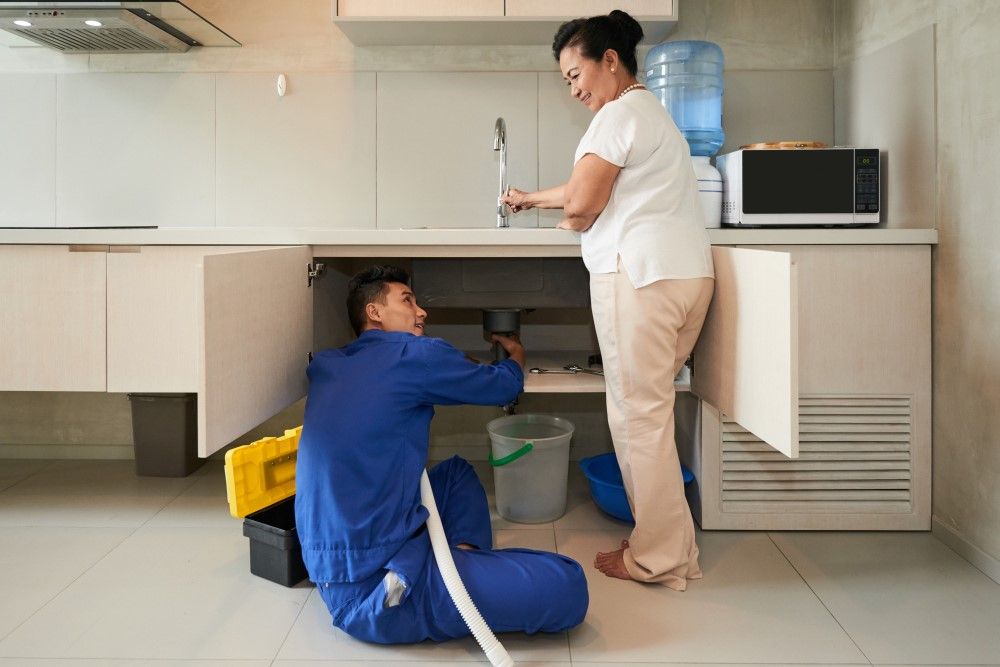
Whole Home Repiping: Elevating Your Living Experience
Considering a whole house, repipe can significantly enhance your living environment, ensuring a seamless water flow throughout your residence. Over time, aging pipes can deteriorate, leading to leaks, low water pressure, and even water contamination. By opting for a whole house repipe, you address these issues and upgrade your plumbing system to modern standards, offering peace of mind and a more comfortable lifestyle.
Advantages of Whole Home Repiping
Investing in a whole home repipe brings various benefits to homeowners. Firstly, it eliminates the risk of sudden leaks and pipe bursts, which can cause extensive water damage and costly repairs. With new, durable pipes installed, you can enjoy improved water pressure and quality, enhancing your daily activities such as showering, cooking, and laundry. Moreover, a whole house repipe adds value to your property, making it more attractive to buyers if you ever decide to sell.
- Enhanced Water Quality: One of the primary advantages of a whole house repipe is improved water quality. Old pipes can accumulate rust, sediment, and other contaminants over time, affecting the taste and purity of your water supply. Replacing these pipes with new, corrosion-resistant materials ensures clean and safe water. This upgrade is particularly beneficial for households concerned about the well-being of their families.
- Increased Energy Efficiency: Upgrading your plumbing system with a whole home repipe can also improve energy efficiency. Leaky or inefficient pipes can cause hot water to lose heat as it travels from the water heater to the tap, resulting in higher energy bills. By installing modern, well-insulated pipes, you minimize heat loss and optimize the energy efficiency of your water heating system. This saves you money in the long run and reduces your carbon footprint.
- Long-Term Cost Savings: While the investment in a whole house repipe may seem significant, it can save you money in the long term. Old, deteriorating pipes are prone to frequent leaks and repairs, adding to substantial costs. Proactively replacing them with new, high-quality pipes eliminates the need for frequent repairs, saving you both time and money in the future. A whole house repipe can also prevent costly water damage to your property, reducing the risk of unexpected expenses.
Professional Installation
When considering a whole home repipe, hiring a reputable plumbing company with experience in such projects is crucial. Professional plumbers have the expertise and equipment to assess your existing plumbing system, recommend the best action, and execute the repiping process efficiently. They use top-quality materials and adhere to industry standards to ensure the reliability of your new plumbing system.
Choosing the Right Materials
When repiping your home, you have several pipe materials options, each with advantages and considerations. Copper pipes are durable, resistant to corrosion, and have a long lifespan, making them a popular choice for whole-home repiping. However, they can be more expensive than other materials and may require skilled installation. Alternatively, PEX (cross-linked polyethylene) pipes are flexible, easy to install, and less prone to freezing, making them suitable for cold climates.
Factors to Consider Before Repiping
Before embarking on a whole home repipe project, several factors must be considered. Firstly, assess the age and condition of your existing pipes to determine if repiping is necessary. Signs of aging pipes include frequent leaks, rusty water, and reduced water pressure. Contemplate your budget and timeline for the project, as whole home repiping can be a substantial undertaking that requires careful planning and budgeting.
Another factor to consider is the scope of the repiping project. Will you replace all the pipes in your home or only certain sections? A detailed inspection by a qualified plumber can help determine the extent of the work required and provide a detailed cost estimate. Finally, consider any disruptions to your daily routine during the repiping process, as some areas of your home may be temporarily inaccessible or out of service while the work is being completed.
The Repiping Process Demystified
The whole home repipe process typically begins with an initial consultation and inspection by a licensed plumber. During this visit, the plumber will assess the condition of your existing plumbing system, discuss your options for repiping, and provide a detailed cost estimate for the project. Once you’ve agreed to move forward, the repiping process can begin.
First, the plumber will shut off the water supply to your home and drain the existing pipes to prepare for removal. Next, the old pipes will be carefully removed and disposed of to install new ones. Depending on the project’s scope, this may involve removing drywall or accessing pipes in crawl spaces or attics.
Once the old pipes have been removed, the plumber will install new pipes using the chosen materials, such as copper or PEX. The pipes will be adequately secured and connected to fixtures throughout your home, ensuring a reliable and efficient plumbing system. Finally, the plumber will conduct pressure tests to ensure the new pipes are installed and leak-free before restoring water service to your home.
Conclusion: Elevating Your Home with Whole Home Repiping from Arizona Integrity Plumbing
Investing in a whole home repipe is wise for homeowners looking to improve their living experience and protect their property. By addressing leaks, low water pressure, and water contamination, you can enjoy clean, reliable water throughout your home while increasing its value and energy efficiency. For professional whole home repiping services in Arizona, trust Arizona Integrity Plumbing to deliver exceptional results and peace of mind for years to come.
